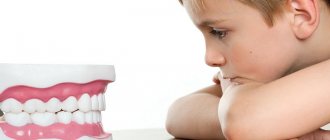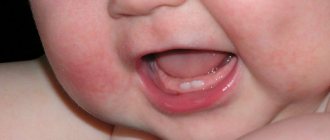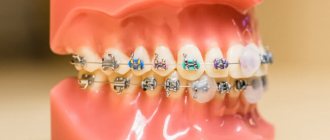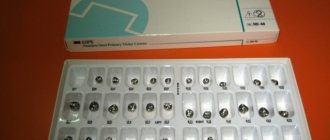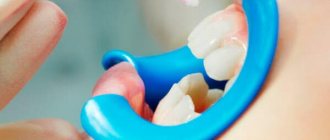It is no secret that not only children, but also adults are afraid to visit dentists. This is why most parents put off going to this doctor. But it happens that a child has problems with his teeth. Moreover, this can happen already in early childhood. At this moment, parents are faced with the question of whether it is necessary to treat caries of baby teeth. Adults mistakenly believe that this is not a big deal, because the milk will fall out anyway. Dentists absolutely disagree with this assumption. If you do not treat it with due attention, then in older age such changes can lead to more severe consequences.
Why does tooth decay occur?
The reason is the action of streptococci, which locally lower the pH on the surface of the teeth. As a result, the integrity of the enamel is compromised, hard tissue is destroyed, and a cavity is formed.
The first thing mom might notice is a dark spot on the tooth. Even if these changes do not cause any inconvenience to your child, it is still necessary to consult a dentist. Because caries, if left untreated, progresses and destroys.
A serious consequence can be nerve damage with the formation of pulpitis, which in turn provokes further spread of infectious agents into the bones of the upper or lower jaw.
Predisposing factors for the development of caries are:
- Failure to comply with the rules of hygienic brushing of teeth. Optimally, apply twice a day (morning and evening). This way, plaque accumulates on the surface overnight, which is a suitable environment for bacteria to multiply. In the evening, the procedure is necessary to remove food debris from the space between the teeth.
- Excessive consumption of sweets and carbonated drinks. Few parents are able to deny their child chocolate, cookies, or cake. But it is important to understand that children's teeth are extremely sensitive to such products. Limiting carbohydrates is an indicator of love for your child. It is better to replace store-bought sweets with fresh fruit.
- Reduced general protective functions of the baby’s body. If you notice that caries appears frequently with a balanced and controlled diet, then it is necessary to rule out immune system disorders. In this case, you may need to consult an immunologist.
Important! Long-term dental diseases can develop into a chronic stage with constant circulation of infection in the body. Then the baby often develops acute respiratory viral infections and allergic skin reactions such as urticaria. Toothache leads to poor appetite and, accordingly, to insufficient weight gain.
An aesthetic complication is an incorrectly formed bite, curvature of the permanent teeth.
Pulpitis is a severe complication of advanced caries
On the outside, each tooth is covered with enamel; underneath it is dentin, which makes up a larger volume. Next is the pulp, represented by loose fibrous tissue, vascular, nervous and lymphatic structures.
When caries affects the cavity without treatment, a cavity appears, which is initially limited to hard tissues. Further spread of inflammation leads to penetration through dentin into the central sections, involving the pulp. In this case, pulpitis develops.
Pulpitis of baby teeth appears and progresses faster in children than in adults. This feature is due to the low degree of mineralization. Most often the lower row is affected, but pulpitis of the incisors and molars of the upper jaw is possible.
If you notice these signs in your child, you should consult a doctor:
- Acute pain that intensifies when eating hot or cold food.
- Specific odor from the mouth. It is especially clearly defined in the morning after sleep.
- Swelling, redness of the tissues around the tooth, possibly bleeding of the gums when brushing.
- Low-grade fever up to 37.5 degrees.
Important! If your child is diagnosed with pulpitis, then it needs to be treated. It is forbidden to give your baby painkillers and wait for natural tooth loss.
Waiting and waiting will only make the problem worse. Not treated in a timely manner increases the risk of developing periostitis (inflammation at the jaw level) or periodontitis (disease of the tissues that support the tooth).
Caries detection methods and treatment options
When visiting a dentist, the doctor will initially conduct a complete examination of the oral cavity, visually or using a laser. Based on the results of the study, he will offer treatment options: ozonation, silvering, fluoridation, filling or denervation.
Laser
The most difficult areas to visualize are the cervical and contact areas. To examine hard-to-reach places, dentists have come to the aid of a laser, which allows them to assess the spread of the infectious process.
It looks like a lantern. It can be used to scan the surface of the tooth. Of course, he does not see the deep sections; for this, X-ray techniques are used. But it can identify caries by sounding a signal about the presence of bacteria.
In modern dental clinics in Europe, this diagnostic method for children is widespread. It helps to fix the problem in the early stages, so filling is extremely rarely used there. There are no unpleasant sensations from the scan; therefore, the child does not develop fear.
The laser is also used to control the treatment performed. This is done to prevent re-growth of bacteria and early treatment if a need is identified.
Ozone
If caries is detected in a child in the early stages, then there is a technique that allows you to restore tooth tissue. Today, one of the most effective treatment techniques is ozone irrigation. This gas is very active against carious bacteria. Since it has high oxidative efficiency, it easily kills infection and prevents the spread of caries.
The substance acts quickly, ridding the child’s teeth of harmful bacteria in seconds. Ozone is introduced into the oral cavity using a special silicone cup. Its soft structure does not damage the child’s gums and does not cause discomfort during the entire procedure. At the end of all manipulations, a special composition is applied to the teeth to prolong the effect.
A secondary property of ozone is the activation of metabolic processes throughout the body.
It has long been known that the occurrence of caries is more often observed on teeth that have previously been filled. The reason is simple - no matter how well the dentist treats, bacteria always remain in such teeth. However, ozonation is guaranteed to prevent the secondary occurrence of caries.
Silvering
The silvering technique is good from both practical and aesthetic aspects. It can only be called treatment in part, because the main task is to prevent new carious lesions and “wall up” existing ones.
The method is based on the technology of coating metals with silver ions, which provides them with a longer service life without losing their original shine.
Silvering is a good method, but is only suitable for treating superficial caries. If the bacteria has penetrated the gum tissue, then a miracle will not happen and there will be no benefit from the procedure. Caries will continue to destroy other teeth.
You can prevent the formation of caries only by sealing your teeth in advance. To do this, the enamel grooves on the side of the chewing surface are treated with a special solution containing silver ions.
The procedure is easy to perform, and the effect after it can last up to three years with proper care. Before deciding to take this step, you should consult with a specialist.
Fluoridation
In addition to silvering, there is such an equally useful procedure as fluoridation. A special active fluoride solution is applied to the enamel, giving it whiteness. The process of such treatment of a child’s teeth is quick, does not require special preparations and does not cause pain.
Fluoridation itself is not considered a therapeutic measure, but is a fairly effective preventive measure.
The procedure has a number of contraindications. It should not be performed on people who live in areas with high levels of fluoride in the atmosphere. It is customary to resort to fluoridation only when a child’s caries is in the “white spot” stage.
Children's teeth. Silver plated, filled or what to do?
Authors : Solovyov D.V.
Quite often you hear the phrase from parents: “The child has a hole in his tooth, they silvered it for us and sent us to wait.” In general, among parents (unfortunately, often under the influence of pediatric dentists) there is a widespread opinion that all treatment of baby teeth usually comes down to “silvering” and waiting. On the one hand, this dulls vigilance: they say, if something happens, we can easily do this very quick procedure and we won’t know grief; on the other hand, it discourages unnecessary visits to the doctor: not everyone likes the result of this action in the form of black teeth (especially on a girl ). So what is this notorious silvering?
Silvering is the lubrication of a tooth with a special composition, resulting in a layer of restored silver remaining on the surface. The point is that this layer should, in theory, exhibit disinfecting properties and prevent further spread of the process.
Silvering seems to be a rather convenient way of prevention - it is done quickly, the child does not have time to get tired, the dentist is able to serve quite a lot of patients. However, our mass passion for silvering is not at all healthy. The most important thing to understand is that silvering is only an attempt to preserve the process, and not a treatment at all. That is, this attempt may or may not be successful; in fact, we rely on luck. In addition, under the layer of black silver it is not visible how far the process is spreading. As a result, too often the tooth happily rots further, while the parents think that everything is fine.
Why do doctors very often say that nothing can be done and we have to wait? Yes, because in our country treating children is a completely unprofitable business. In the public service, a strictly defined time is allocated for treatment, while the personal characteristics of the child are not taken into account at all (i.e., is it necessary to persuade him), the nurse, as a rule, does not work in tandem with a specific doctor, there is simply not enough modern materials and conditions for quality work. Commercial children's services are literally at odds for another reason - treatment of children is much more expensive than an adult, and in our conditions there are not many people willing to pay such an increased price. That is why it is much easier to “anoint and send away” in half a minute.
It must be said that abroad, even prosthetics for children is a completely common, routine matter. For us, it seems like some kind of almost space technology.
What's the best thing to do?
— Silvering is permissible only at the initial stage of the process . If after a month or two it is clear that the process does not stop, see the next point.
— If there is already a cavity (and not just a stain), then it is necessary to fill it. No better drills have yet been invented, especially in comparison with various “laser treatments” or “treatment without drilling.” The laser has quite a few limitations, and no chemical can clean out rotten cavity as well as a drill, although the choice is certainly yours.
— A rotten tooth is a source of infection. Removing baby teeth too early is certainly not a good option. But if a baby tooth has already disappeared “to the ground,” then we need to evaluate which evil is less – a chronic source of infection (which can also affect permanent teeth) or a hypothetical (i.e., which may not exist) uneven teeth in the future. In order to save space for the future permanent tooth, there are so-called “space keepers”.
— Statements that “baby teeth cannot be treated” are a blatant lie ! They not only put fillings (and normal ones at that), but also remove nerves and fill canals (although not quite the same as for adults).
— If it is not possible to establish contact with the child (it is not possible), and more than one tooth needs to be treated, then the best option is anesthesia. Don't be afraid of anesthesia, it is completely different now than it was 20 years ago. In addition, the harm from the psychological trauma of a screaming and struggling child will be much greater. Not to mention the pain and risk of serious injury if the child twitches. Just in case, the turbine installation produces a minimum of 300 thousand boron revolutions per minute.
— A really effective prevention is the so-called fissure sealing. This is a coating of teeth (we are talking about still healthy teeth, not already missing ones) with a special composition (like white varnish), which hardens under the influence of a special lamp, “smoothes out” tooth irregularities and releases fluoride (which increases the tooth’s resistance to caries). Lasts for at least six months (usually more). I would like to draw special attention to the fact that using a drug called “fluoride varnish” is far from the best option. This is a very cheap domestic varnish that hardly hardens on the tooth, is almost completely washed off the tooth within a few hours, but it holds up remarkably well if it gets on clothes.
— The teething dates are written here.
Please note once again that deviations from these deadlines by 6 months in one direction or another are the norm! The order of cutting is arbitrary and most often does not play a special role!
The choice, as always, is yours.
Consultations by Dmitry Solovyov at ClubCom
published 03/09/2013 11:36 updated 27/09/2016 — Diseases of the teeth and oral cavity, Dentistry
Treat or remove?
If a child begins to be bothered by toothache, then a choice arises: should baby teeth be treated or removed? On the one hand, treatment is a long and expensive procedure. On the other hand, I deleted it and forgot about it. But this decision is made only by the dentist. If they have not yet changed, the doctor can remove them. But if a change in dairy products has already occurred, then the advice will be clear - treat.
A simple fact: parents are always worried about the safety of their child’s front teeth. And this is far from correct. Of course, all are equally important, but from a practical point of view, the back teeth are much more important.
Under any circumstances, it is better to save a diseased tooth and make every effort to restore it. This is important because if baby molars are lost, permanent teeth will begin to grow ahead of schedule. And this affects the growth of premolars and all other teeth.
Why you can’t remove baby teeth
The health and proper development of the first teeth determines what the permanent teeth will be like later. Their premature removal entails problems such as:
- abnormal formation of molars
In the gums under the baby teeth there are the rudiments of permanent teeth; removing a temporary tooth too early can lead to disruptions in the development of the future permanent one;
- bite problems
Over time, the remaining milk teeth in the dentition tend to occupy the free space vacated after the removal of one of them. Because of this, permanent teeth begin to grow chaotically, and jaw development may also slow down. These reasons provoke malocclusion in a child, the correction of which requires a lot of time, money and effort.

